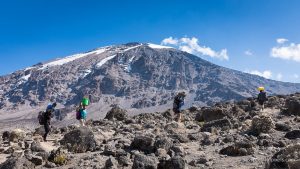Navigating Altitude: Kilimanjaro Hike Essentials
Understanding Altitude: Preparation for Kilimanjaro Ascent
Mount Kilimanjaro, standing tall as the highest peak in Africa, is a coveted destination for adventure seekers around the world. However, its towering altitude can pose significant challenges to even the most experienced hikers. Understanding the effects of altitude and properly preparing for the ascent is crucial to ensuring a safe and successful Kilimanjaro hike.
Altitude sickness, also known as acute mountain sickness (AMS), occurs when the body is unable to acclimatize to the decreased oxygen levels at higher elevations. Symptoms can range from mild headaches and nausea to more severe conditions such as pulmonary or cerebral edema. To prevent altitude sickness, it is important to acclimatize gradually by taking regular rest days during the ascent and staying hydrated.
In addition to acclimatization, physical fitness is key to a successful Kilimanjaro hike. While the climb itself does not require technical climbing skills, a good level of cardiovascular fitness and endurance is essential. Regular exercise in the months leading up to the hike, including hiking and cardio workouts, can help prepare your body for the physical demands of the ascent.
Essential Gear and Tips for a Successful Kilimanjaro Hike
When embarking on a Kilimanjaro hike, having the right gear is essential to staying safe and comfortable throughout the journey. Here are some essential items to include in your packing list:
-
Layered clothing: The weather on Kilimanjaro can vary greatly, from scorching heat at lower elevations to freezing temperatures at the summit. Dressing in layers allows you to adjust to changing conditions and stay warm during cold nights.
-
Quality hiking boots: A sturdy pair of hiking boots with good ankle support is essential for navigating the rocky terrain of Kilimanjaro. Make sure to break them in before the hike to prevent blisters and discomfort.
-
Sleeping bag and mat: A warm sleeping bag rated for sub-zero temperatures is a must-have for overnight stays on the mountain. A comfortable sleeping mat will provide insulation from the cold ground.
-
Water and snacks: Staying hydrated is crucial at high altitudes, so be sure to carry enough water to drink throughout the day. Pack high-energy snacks such as nuts and energy bars to fuel your body during the ascent.
-
Sun protection: The sun’s UV rays are stronger at higher altitudes, so be sure to pack sunscreen, sunglasses, and a wide-brimmed hat to protect your skin and eyes.
To ensure a safe and enjoyable Kilimanjaro hike, it is recommended to book a guided tour with a reputable company such as Sunset Africa Safari. Their experienced guides and support staff will provide expert guidance and assistance throughout the journey. For booking inquiries, please contact info@sunsetafricasafari.com.
By understanding the effects of altitude, properly preparing for the ascent, and packing the necessary gear, you can embark on a Kilimanjaro hike with confidence and enjoy the breathtaking views from Africa’s highest peak.


